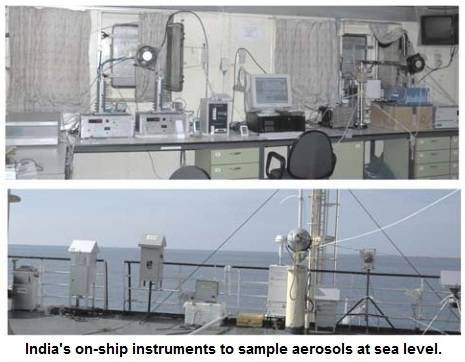Solar Radiation Management, Geoengineering and Chemtrails
IPCC warns policymakers not to stop ‘solar radiation management’

The Fifth Assessment Report of the Intergovernmental Panel on Climate Change (IPCC) warns that, despite global side effects and long-term consequences, geoengineering techniques involving solar radiation management (SRM) should be maintained:
“If SRM were terminated for any reason, there is high confidence that global surface temperatures would rise very rapidly to values consistent with the greenhouse gas forcing.” [emphasis in original]
“Climate Change 2013: The Physical Science Basis,” (referred to as “AR5”) supercedes the former report published in 2007. [1] The IPCC’s first Assessment Report was published in 1990.
The discussion in the Summary for Policymakers and in the body of AR5 commends solar radiation management over carbon dioxide removal methods, which are limited in their efficacy on a global scale, yet admits that neither are ideal, and that both geoengineering techniques will have long-term consequences.
“While the entire community of academia still pretends not to know about the ongoing reality of global geoengineering,” comments Dane Wigington at Geoengineering Watch, “the simple fact that they are now discussing geoengineering in the latest IPCC report indicates that the veil is beginning to lift.” [2]
Solar radiation management comprises various techniques aimed at reflecting or diverting solar radiation back into space, essentially increasing the planet’s albedo (reflectivity). Many geoengineers, along with the IPCC, prefer solar radiation management methods to carbon dioxide removal as a climate fix, given the planet’s complex carbon feedback loops, and the much cheaper and quicker method of spraying our skies with albedo-enhancing particles.
“Block the sun but continue to spew billions of tons of carbon dioxide into the atmosphere,” is how Eli Kintisch characterizes SRM in his 2010 book, Hack the Planet. [3] In a world run by sanity, we would forego fossil fuels for free and abundant solar energy, coupled with Tesla’s development of free electricity, to meet the world’s energy needs, without destroying our nest by extracting and burning fossil fuels.
Solar radiation management has “three essential characteristics,” notes the International Risk Governance Council (IRGC). “It is cheap, fast and imperfect,” [4] Citing geoengineering activist, David Keith, the IRGC explains that by injecting 13,000 tons of sulphate aerosol into the stratosphere on a daily basis, they would offset the radiative effects of a doubling of atmospheric CO2 concentrations. This compares to having to remove “225 million tons per day of CO2 from the atmosphere for 25 years.”
Were reason to prevail, we would capture solar energy, not block it; we would shun fossil fuels, not wage ecocidal wars to seize remaining supplies. In today’s world, however, policymakers have diverted billions of dollars into blocking the sun. Efficient systems cost around $10 billion a year, “well within the budgets of most countries,” notes the IRGC.
In addition to warning policymakers in its Summary that chemtrails must continue, the IPCC also denies that such programs exist. Buried within Chapter 7, the IPCC simply states, “SRM methods are unimplemented and untested.”
It’s an odd statement, given the warning that to stop SRM would heat the planet. Plus, the IPCC admits in AR5:
“New and improved observational aerosol datasets have emerged since AR4. A number of field experiments have taken place.”
One of the programs listed, the Intercontinental Chemical Transport Experiment, covered the Northern Hemisphere, measuring aerosols originating in Asia and crossing the Pacific into North America, then continuing across the continent, across the Atlantic Ocean and into Europe. Headed by the International Global Atmospheric Chemistry Project, these flights ran in 2004 and 2006, and reportedly numbered less than four dozen.
Another “experiment,” the European Aerosol Cloud Climate and Air Quality Interactions project, started in January 2007 and ended in December 2010 – running for a full four years, and included Africa.
In addition to the joint regional projects, several nations also perform similar field trials within their own borders. India admits to running SRM programs for over ten years.
Surely, field trials move way beyond “experiments” when they cover continents and cross oceans and are performed over a period of years.
Another inconsistency in AR5 is its discussion of persistent contrails. Despite the dire warning in the Summary urging policymakers to continue with their solar radiation management programs lest the planet’s surface cooks, the body of AR5 sees persistent contrails as responsible for only a very slight increase in radiative forcing (where solar energy is radiated back into space).
Overall, the IPCC has “medium confidence” that these persistent contrails and their induced cirrus clouds do not change surface temperatures on the planet. This contradicts what scientists found during the 3-day grounding of all US planes after 9/11 (except those scooting Saudis out of the country). Ground temperatures increased 2-3 ºC during the absence of contrails, persistent or not.



